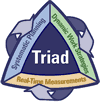
| Site Name | Oxnard Airport, Hanger Site III |
| Location | Oxnard, CA |
| Site Type |
Municipal Airport |
| Project Lead Type |
Municipal/Local Lead |
| Reuse Objective Identified |
No |
Site consisted of two former underground storage tank (UST) areas with soil and groundwater contaminated with a mix of aviation fuels and waste oil. The responsible party (a municipality) and regulator were frustrated by years of quarterly monitoring and an ineffective soil vapor extraction system that failed to address site issues. A new technical team was brought on to get the site back on track toward closure.
The objectives for this project were to:
The Triad process resulted in better understanding of the site, resolution of long-standing questions, and more confident decision-making based on an accurate CSM. Real-time data acquisition and modeling allowed rapid evolution of the CSM and cost-effective completion of site characterization. A thorough engineering evaluation was performed to support appropriate remedy selection. The team approach to planning reduced conflict and resulted in a more positive outlook. Transparency and communication practices kept the team on track. Systematic planning has resulted in clearly-defined end goals and an exit strategy based on a continually updated CSM.
The membrane interface probe (MIP) investigation saved an estimated $75,000 in repeated mobilizations.
Report and planning meetings are held regularly with the regulator, municipality, and technical team. Initially, the group agreed on what the existing data gaps were, and proposed methods to resolve them. Following engineering evaluations and the Triad approach site characterization, an updated CSM was developed. Groundwater flow uncertainties were resolved using data from new water table wells, rather than existing long-screen wells that were found to penetrate a previously undefined confining layer. The plume extent was found to be three times larger than prior limited data suggested; soil contamination was also much deeper than previously defined. However, the regulator accepted that this site posed limited exposure risks based on the new CSM. Consequently, groundwater monitoring was reduced from quarterly to semi-annually. Planning continues to determine the best remedial approach based on airport management planned land use and regulator requirements.
The dynamic work plan included real-time data acquisition to rapidly advance the CSM, including completion of plume and source area delineations. Dynamic work strategies are proposed for a pilot study for enhanced bioremediation.
A membrane interface probe (MIP) and direct-push technology (DPT) rig were used with real-time Web-based reporting, data modeling, and visualization. Web-based reporting during the investigation facilitated team communication and supported confident field decision-making.
Not available
To update this profile, contact Cheryl T. Johnson at Johnson.Cheryl@epa.gov or (703) 603-9045.